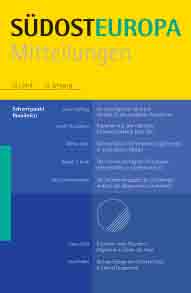Serbian Energy and Climate Policy: A Critical Perspective
Serbian Energy and Climate Policy: A Critical Perspective
Author(s): Ana BrnabićSubject(s): Economy
Published by: Südosteuropa Gesellschaft e.V.
Summary/Abstract: Serbian thermal power plants are among the primary sources of NOx , dust pollution and the single largest source of SO2 in Europe. Strangely though, Europe is more worried about this than Serbia itself although Serbian citizens suffer gravely from the pollution. The UN World Health Organization (WHO) identifies Serbia as the country with the highest increase in mortality rates due to lung cancer in Europe. Extremely high dependency on coal (lignite) for electricity production has serious negative effects on Serbia’s agriculture, the health system and its economy. Even the state-owned electric power company (EPS) admits – although never officially – that the external costs of outdated thermal power plants in Serbia reach about € 13 cents per each kWh of electricity produced. This means that the real price of electricity production in Serbia is about € 18 cents per kWh. In spite of this, the new Energy Strategy envisions over 1 GW of new coal-fueled power plants by 2030. To make things worse, 76 % of Serbia’s coal reserves are based in Kosovo, meaning the country will have to import coal to burn it, thus paying for additional CO2 emissions into the atmosphere and continued external health costs suffered by its citizens. The heating sector is heavily dependent on gas imports. This dependency further compromises the energy security of Serbia. As many would say in Serbia: “From here, the only way is up”. As far as the energy sector is concerned, up means renewables. Serbia is simply not large and rich enough to preserve its coal-based energy policy, but it is slow to act on this assessment.
Journal: Südosteuropa Mitteilungen
- Issue Year: 2014
- Issue No: 02
- Page Range: 88-100
- Page Count: 13
- Language: English
- Content File-PDF

